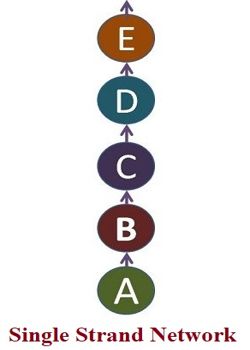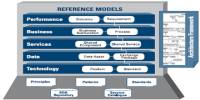The single-strand chain involves the passing of information through a line of persons to the ultimate recipient. Under this communication pattern, the information flows from one person to the next person in the network. It can seep from person to person in a strictly linear fashion. Such as, one person will give information to another person who will communicate it to the next person, and similarly, the third person will also communicate the same message to the next person in the network and so on. The information takes time to spread in this fashion. This type of chain is less reliable and accurate to pass on the message.
In Single Strand Network, one person communicates with one person and then they go and communicate with another person. Communication is traveling from one person to another person.
A single strand network is an information network where one person will tell a message to another person and he will communicate it to another person. Similar to the chain pattern, in a single strand too, the information goes on passing from one person to another; then to the next; and so on. The third person also will tell the same message to another person.

In a single strand network, the process of communication is very linear and information travels from one person to the next person. This network consists of a long chain of people who each pass the message to the next person. It is the least frequently used method. The best way to think of this type of informal communication network is like a relay race. Under this network, each person can communicate with the other person in a sequence only. But instead of passing a baton between runners, some type of information is passed from person to person. The single-strand chain involves the passing of information through a line of persons to the ultimate recipient. This communication network represents the traditional notions of serialized transmission.
Information Source:
















